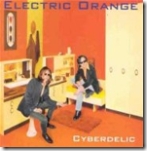 As previously reported here, direct-banking giant ING Direct (U.S.) <ingdirect.com> will soon be in the checking account business with the Feb. 1 launch of Electric Orange.
As previously reported here, direct-banking giant ING Direct (U.S.) <ingdirect.com> will soon be in the checking account business with the Feb. 1 launch of Electric Orange.
(No word on whether the German band of the same name will be part of the launch event.)
In an interview published yesterday in Delaware's The News Journal, CEO Arkadi Kuhlmann revealed important details about the effort:
- It would be made available to about 10% of the bank's 4.4 million customers in December
- The nationwide launch is scheduled for Feb. 1
- ING Direct is planning to add 500 workers at Wilmington's headquarters to support the product, an expansion of more than 50% from its current headcount of 900
- The account will NOT have paper checks, but it will allow customers to print one from their home computer if necessary
- The interest rate will be 3%, about a third less than its savings rate of 4.4%
- Surcharge-free ATM access will be provided through the Allpoint network of 32,000 machines
Product postioning
While the account sounds relatively standard for an online-only checking account, the ability to print a check from home is an interesting feature we haven't seen before. It sounds like ING Direct will be marketing ease-of-use benefits, most likely centered on the bill payment function.
 The catchy name combined with ING Direct's marketing flair (see picture right from its Chicago cash-cow promotion) should make for an interesting product launch. We'll be paying close attention here and testing the account as soon as possible.
The catchy name combined with ING Direct's marketing flair (see picture right from its Chicago cash-cow promotion) should make for an interesting product launch. We'll be paying close attention here and testing the account as soon as possible.
Analysis
There is little reason for most consumers to choose a branchless bank for their main checking account when they can get free checking PLUS branch services at their local financial institution. ING Direct has long understood this and has not squandered resources on a limited-appeal product.
However, with more than 4 million customers, they have a large enough base to make a profit on a checking account, even a (relatively) lightly used one.
Due to the bank's ease of use and well regarded brand, it should be able to convince a portion of its base to use Electric Orange checking as an auxiliary account, perhaps as the household bill-pay account.
If the bank moves 5% of its $47 billion in savings deposits into the checking account, it would save $3.5 million annually in interest expense. Add another $3 billion in net new deposits at a 3% spread and Electric Orange pulls in $10 million per year, enough to cover expenses anyway.